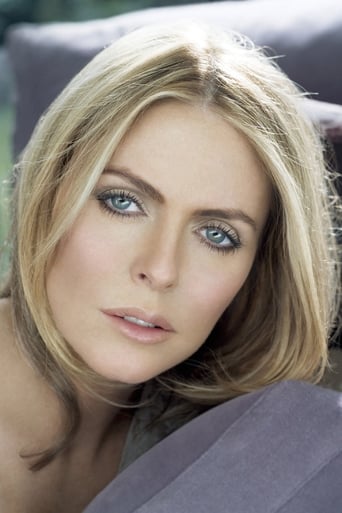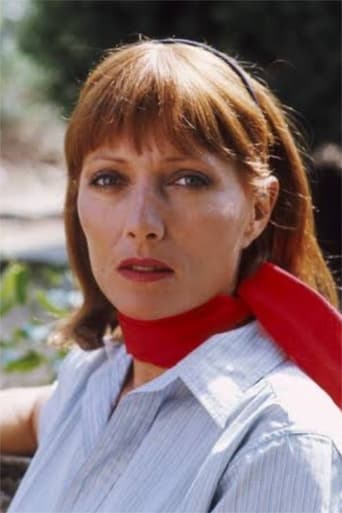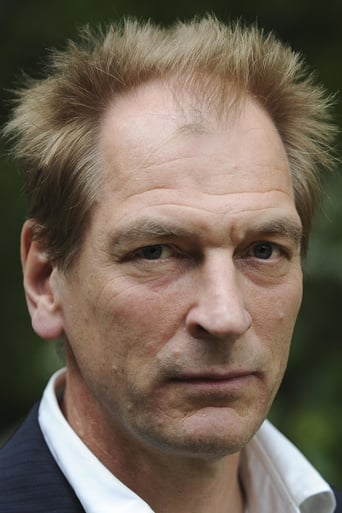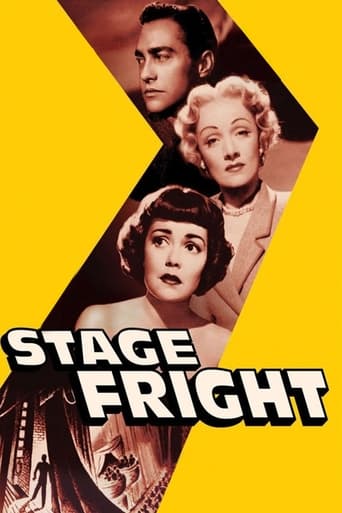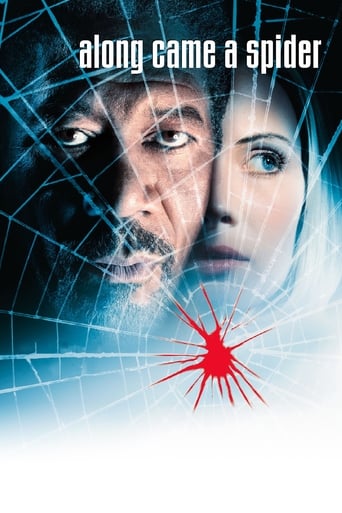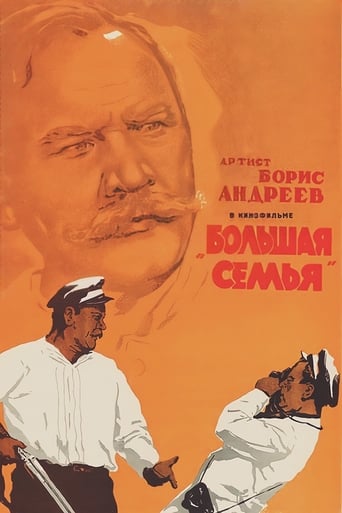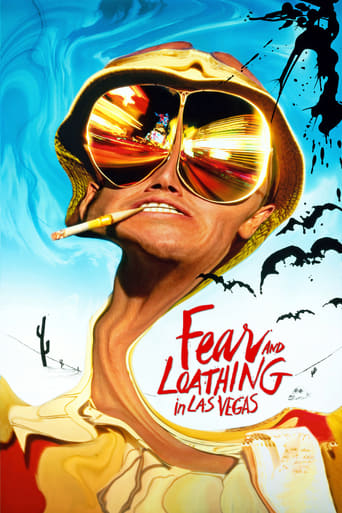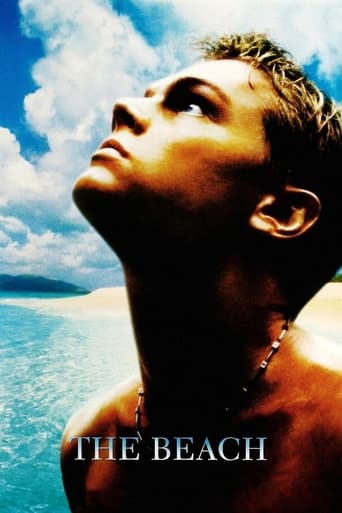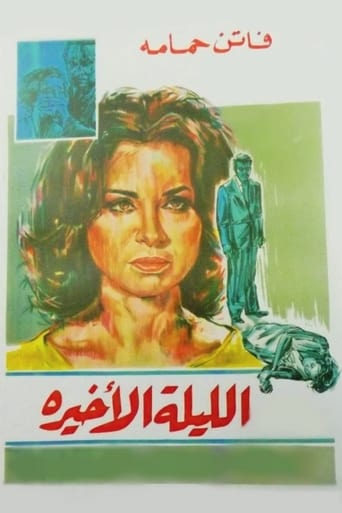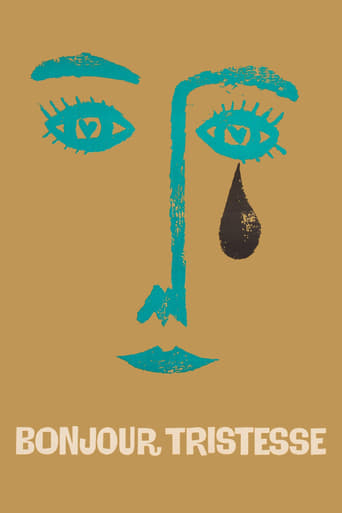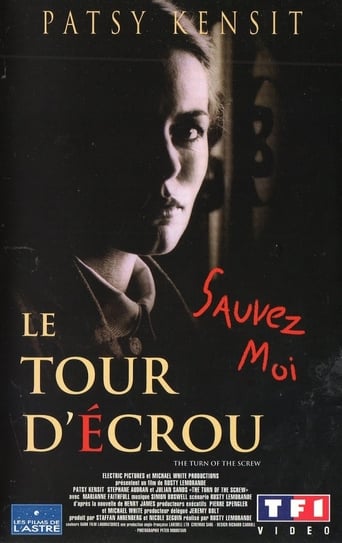
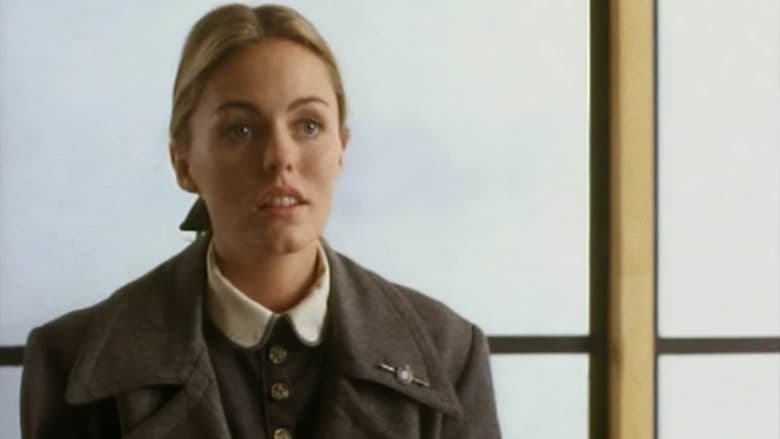
The Turn of the Screw (1992)
A young woman is hired by a wealthy but sinister man to tutor his two children at the family's isolated estate. When the woman gets there, she finds that the two children are not quite what they seem to be--in fact, they are possessed by the spirits of the evil Quint and his lover.
Watch Trailer
Cast


Similar titles
Reviews
To me, this movie is perfection.
Simply Perfect
what a terribly boring film. I'm sorry but this is absolutely not deserving of best picture and will be forgotten quickly. Entertaining and engaging cinema? No. Nothing performances with flat faces and mistaking silence for subtlety.
The movie's not perfect, but it sticks the landing of its message. It was engaging - thrilling at times - and I personally thought it was a great time.
It is difficult to describe the visual beauty of Rusty Lemorande's version of the Henry James novel, 'Turn of the Screw'. Here is a film for people who can appreciate the aesthetic beauty of Gothic cinema. The lovely Patsy Kensit is Jenny, a sexually repressed young woman, who travels to Blye House to care for two very strange, sinister young children. The setting is gorgeous, with almost fetishistic attention being paid to every tiny detail. The clothes, the furnishings, the cars, even the beautiful antique toys are constantly on display here, in a dizzying display of hypnotic beauty. Jenny is tormented by the spirits of the dead, the children's former Nanny, and her mysterious lover. It seems like the children, especially the boy, Miles, have been somehow corrupted by these two. And this version of the story makes it obvious that the 'corruption' is of a sexual nature. Whenever children are sexualized, it adds a truly disturbing level to the goings on. Here we have an utterly bizarre, Gothic/erotic film that has been underrated by critics. Perhaps the subject matter makes some uncomfortable, but true horror should make one feel a bit uneasy. Filled with heavy handed sexual imagery, this is the only film version I know of where the child actors they used were the correct age. And the kids who played little Flora and Miles are superbly pale and haunted looking. Patsy Kensit is fine as the deeply religious Nanny battling her own inner demons as well as the demons of Blye House. Her delicate beauty makes her more of a sympathetic character. Even the music works for this one, haunting music box melodies to compliment the surreal and sometimes breathtaking imagery. The film possesses an undeniable elegance, moving along at a leisurely pace, drawing the viewer in with hypnotic visuals and a classic ghost story. While watching 'Turn of the Screw' I was repeatedly reminded of Mario Bava's masterpiece, "Lisa and the Devil". There is also a bit of "Suspiria" here, but it's similarities to "Lisa" are extreme. The setting; the beautiful house filled with erotic perversion and doomed, illicit romance, the camera angles, the gorgeous attention to detail. I highly recommend 'Turn of the Screw' to fans of Argento and Bava, and other prolific Italian horror directors of the 1970's. I hope someday that this bizarre masterpiece will find it's audience, and get the recognition it deserves.
The Turn of the Screw is set in 60's London where a young woman named Jenny Gooding (Patsy Kensit) has an interview with Mr. Cooper (Julian Sands) about becoming a Governess for two young children in a big house. Mr. Cooper is their legal guardian as both their parents were killed & he needs someone to look after them, Jenny accepts the position. Once there Jenny discovers a huge stately house isolated in the middle of the English countryside where she meets Mrs. Grose (Stephane Audran) the housekeeper & Flora (Claire Szekeres) the young girl she is meant to be looking after. Jenny receives a letter in the post informing her that the second child Miles (Joseph England) has been expelled from his school & coming back. Things go well at first but Miles & Flora are a couple of creepy kids, especially Miles. Jenny also learns that the previous Governess mysteriously died, Jenny's stay starts to become a nightmare as she suffers bad dreams, visions of supposedly dead people & there is definitely something very wrong with Flora & Miles...This British French co-production was written & directed by Rusty Lemorande & is a film that I found far too pedestrian & dull for my liking. The script by Lemorande takes itself 100% seriously, is somewhat sedately paced & was based on the short story by Henry James & I think that the word 'short' is crucial here as this filmed adaptation feels very drawn out & in my opinion has very little substance. I have never read the novel so I cannot compare the two but the fact that the film is narrated feels like it was added to increase the duration & as a whole very little actually happens. Jenny is the only central character with the two children & housekeeper the only other character's with any sort of significant screen time. The film didn't flow properly & the narrative didn't work for me, why does Jenny become so afraid of Miles? Did I miss something, she almost convinces herself without him actually doing anything that I can remember apart from being a bit naughty. Jenny ends up having a breakdown which just didn't seem plausible or convincing in context at all. The ending puzzled me as well, why did the kid die? What were those ghost's at the window doing? What happened to them? Was it Jenny's imagination? The things a mess & ends up being very frustrating as I felt there was a good film trying to break out, if only a bit more time had been spent on the pacing as it's very slow & the story which is loose to say the least. As a whole it's not very engaging or interesting & I found it became quite dull well before the end credits started to roll.Director Lemorande does a terrific job & The Turn of the Screw has a wonderful visual style to it, the locations, the interesting props & set dressing, the creepy toys, the colour schemes, there's some really cool angles & camera shots & I think a lot of time & effort was put into the look of the film. If only as much time had been spent on the script as on the visuals, a shame. Forget about any gore as there isn't any, there is also a distinct lack of scares.Technically the film is great & I have no complaints here, it was shot in Surrey, England. I have to say Patsy Kensit is hot in this, she's very cute. Julian Sands fans will be very disappointed to learn despite his top billing in the credits he has nothing more than a cameo that amounts to about three minutes of screen time.The Turn of the Screw (isn't that a great title for a film?) is a bit of a bore, there's nothing particularly exciting or memorable about it & it doesn't seem to know what sort of film it wants to be. I can't say I'd recommend it unless you like slow, dull pointless films.
This 1992 adaptation of "The Turn of the Screw" is a strange experience indeed. Taking the Henry James Psychological ghost story masterpiece as a starting point, writer/director Rusty Lemorande makes a film that is ultimately a failure, but a very intriguing failure nonetheless. The director takes the central premise of the well known story about a governess coming to doubt the innocence of the children under her care and realizing slowly that they may be haunted by the ghosts of her malevolent and sick predecessors, and produces a film that is much more modern (and by modern I mean graphic) which turns the story into a much more perverted psycho-sexual story about child abuse, the occult and of course repression (all themes that were addressed in Henry James' novella but in a much more subdued manner). But despite achieving moments of true dread and an overall ominous and doom-laden atmosphere (aided tremendously by the beautifully Gothic locations and the occasionally brilliant cinematography), the director errs by making the story lose all the subtlety that was imbued in the original novella and instead relying too much on graphic sex scenes and overt violence (although these only appear in dream sequences which are somewhat brief) and ultimately as many filmmakers do when adapting a classic story, reading too much into the story in terms of sexual repression and perversion. Although James' novella mainly dealt with issues of sanity, perspective and depravity, the main strength of the story was the ambiguity that James imbued the story with, something which made the story much more frightening and disturbing even a century after it was published. But director Lemorande throws all subtlety out the window by using ear-shattering musical cues, gratuitous blood and sex and by portraying the apparitions as some sort of demonic beings, which are all things that do not correspond with the original tone or intention of the original story. But in the end the film has its merits as Lemorands succeeds in creating some moments of visual ingenuity as well as the aforementioned atmosphere which is truly haunting and unnerving, things which many other adaptations of the same story failed to achieve.
Some people who have read James' novella might be off-put by the changes made here: the change of setting, the change of narrator. However, I find that this adaptation is the most faithful to the source of any I have seen. It conveys the mood, the nature of the spectres, and the bewilderment of the novella extremely well. If you want a grey, word-perfect recitation of the story, you can find it elsewhere, but this captures the nature of the torment better than any other.I do not recommend it for everyone, however, since you have to leave your expectations at the door.


